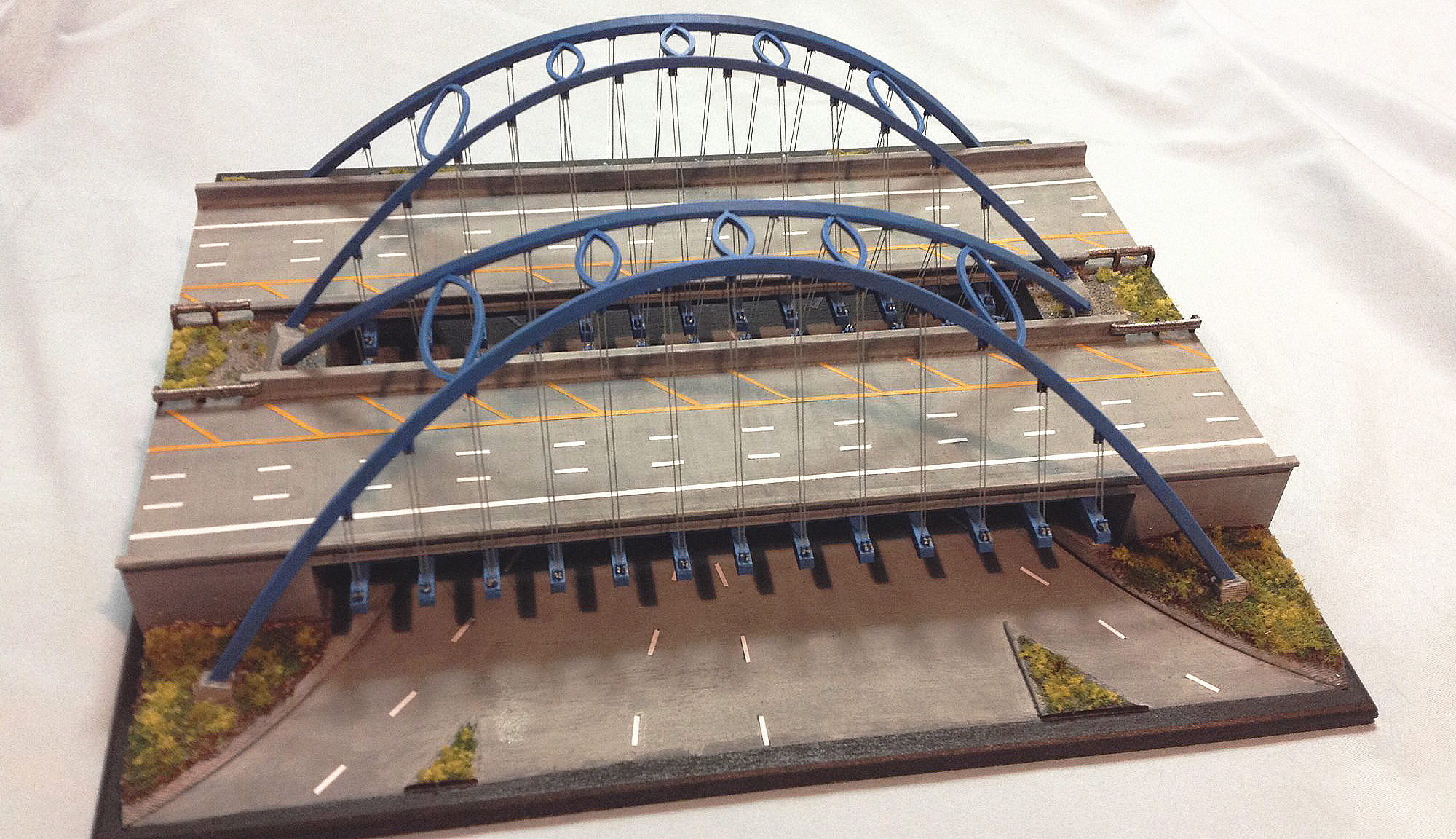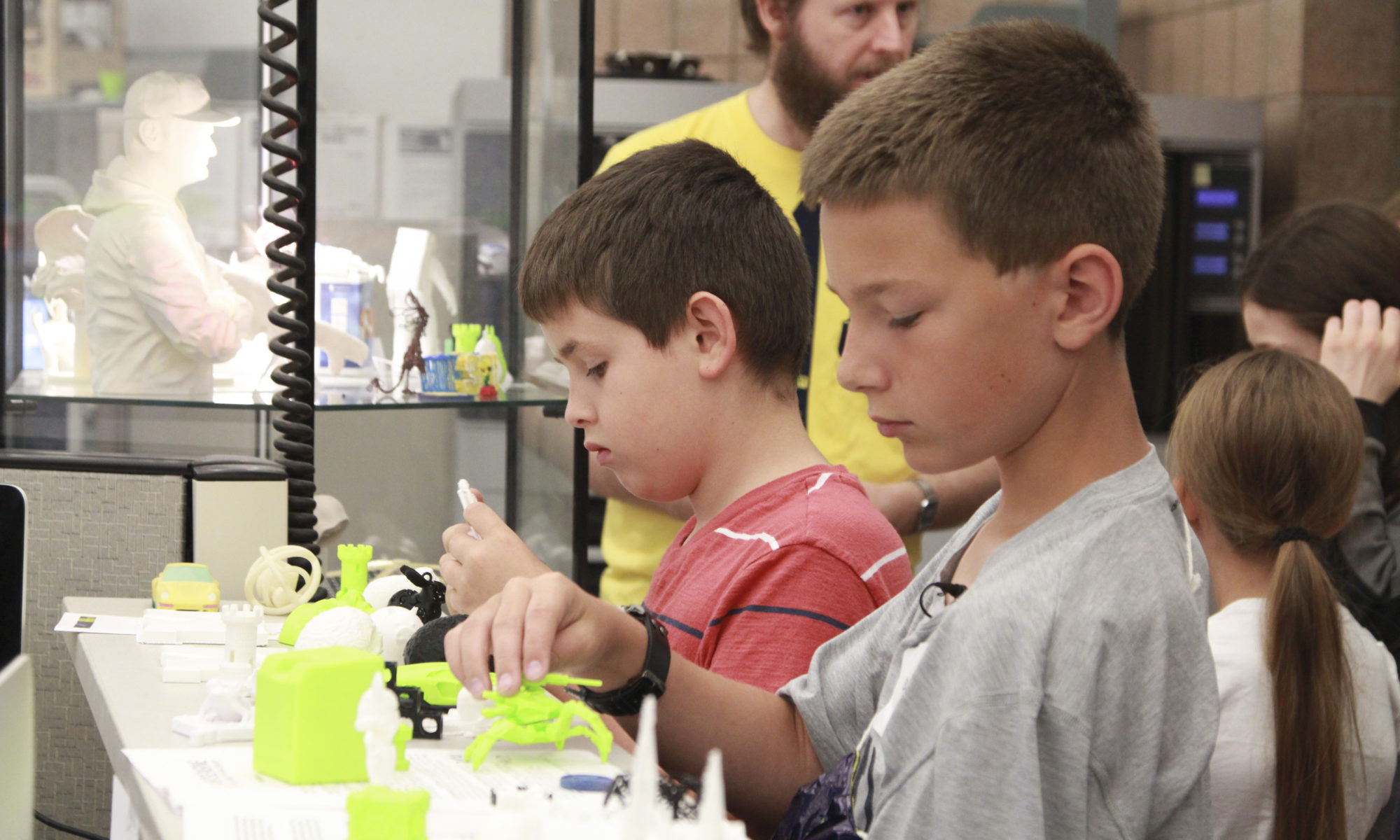Duderstadt Center Joins Local Artist to Re-Create the Gateway Bridge for Michigan Engineering

In June the Duderstadt Center was contacted by Michigan Engineering to assist with a special gift for an alumni donor. Their donor had been the designer of several bridges in the area, including the famous Michigan Gateway Bridge. The Gateway Bridge carries I-94 over eight lanes of US 24, Telegraph Road and is well recognized by commuters for it’s vibrant blue arches.

The Duderstadt Center was provided reference images and the original plans and specifications of the Gateway bridge. From this a 3D model was built and segmented to be printed on two different 3D printers: Our Dimension Elites were used to print the base, allowing for a sturdy, cost effective platform to hold the delicate arches in place. The arches, which required a much higher fidelity, were then printed in pieces using our new Projet 3D printer. The Projet is able to print at a much finer resolution and utilizes a wax support structure that can be melted away, making it the perfect printer for generating the tiny features that would be required for threading the suspension cables of the bridge.
These parts were then passed off to a very talented local diorama artist, Eric Hasiak, for further detailing, where the model was assembled, mounted, painted, had foliage placed and the delicate suspension cables strung.

.







